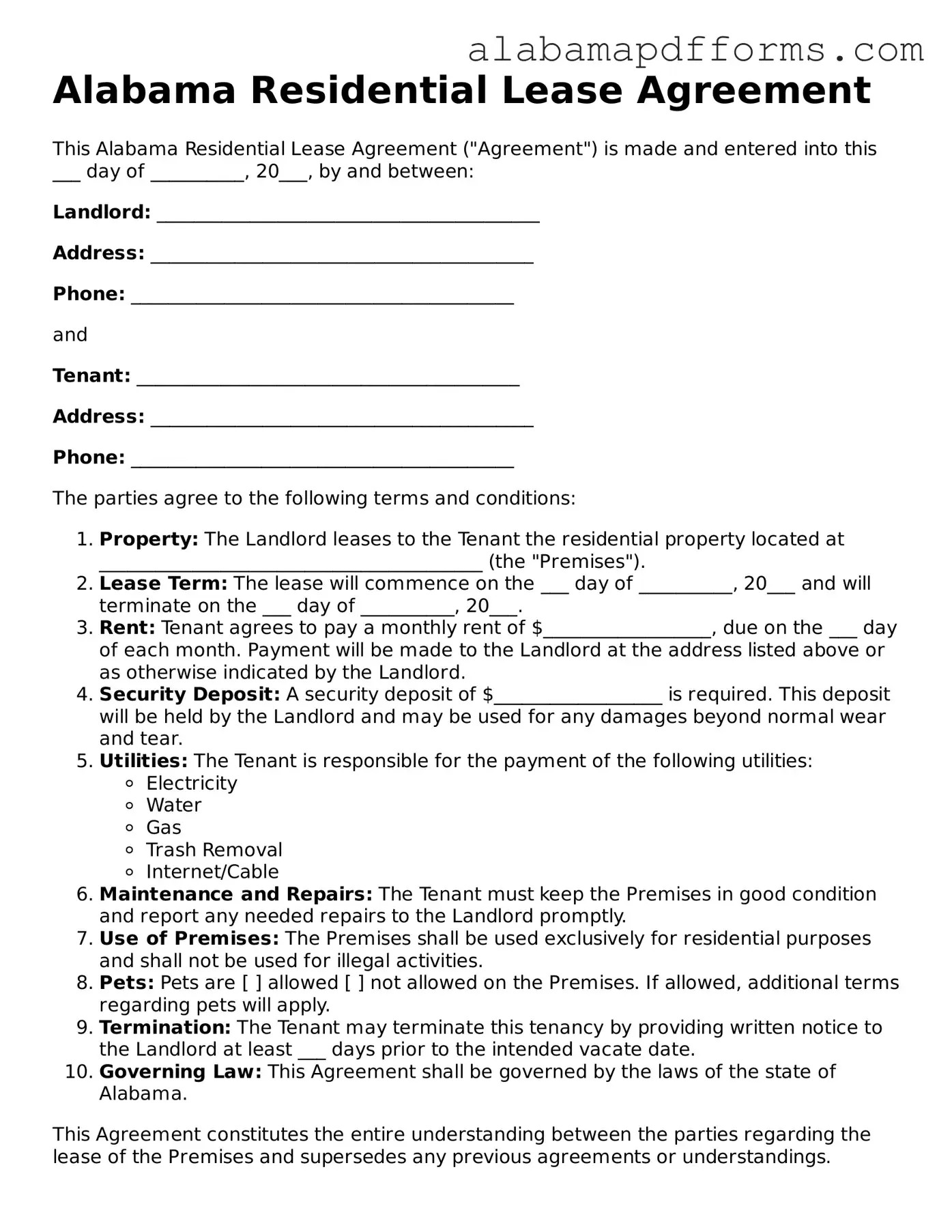The Alabama Residential Lease Agreement is similar to a Rental Agreement, which outlines the terms and conditions under which a landlord allows a tenant to occupy a property. Both documents detail the rental amount, duration of the lease, and responsibilities of each party. However, a Rental Agreement is often more flexible and can be used for shorter-term arrangements, while a Residential Lease Agreement typically covers longer periods, usually a year or more.
Another document that shares similarities is the Commercial Lease Agreement. This type of agreement is specifically designed for businesses renting commercial spaces. Like the Residential Lease Agreement, it includes terms such as rent amount, lease duration, and maintenance responsibilities. The key difference lies in the nature of the property being leased and the specific regulations that apply to commercial versus residential properties.
The Lease Option Agreement is also comparable, as it provides tenants with the option to purchase the property after a certain period. This document combines elements of a lease and a purchase agreement, allowing tenants to rent the property with the possibility of buying it later. Both agreements outline similar terms regarding rent and property maintenance, but the Lease Option Agreement includes additional clauses related to the purchase process.
A sublease agreement is another document that relates closely to the Residential Lease Agreement. This agreement allows a tenant to rent out their leased property to another individual. While it must comply with the terms of the original lease, it requires similar details such as rental terms and responsibilities for maintenance. The primary difference is that the original tenant remains responsible to the landlord for the lease obligations.
The Roommate Agreement is also similar in that it outlines the terms of living arrangements among multiple tenants. This document typically includes rent distribution, shared responsibilities, and rules for communal living. While the Residential Lease Agreement is between the landlord and a tenant, the Roommate Agreement is a private arrangement between individuals sharing a rental unit.
Another related document is the Lease Renewal Agreement. This agreement is used when both the landlord and tenant agree to extend the terms of an existing lease. It often mirrors the original Residential Lease Agreement but may include updated terms or rental rates. Both documents serve to formalize the ongoing relationship between the landlord and tenant.
For those looking to solidify their business arrangements, consider utilizing a tailored Operating Agreement essential for LLCs to define member roles and responsibilities. You can find the necessary document by accessing the comprehensive Operating Agreement form.
The Move-In/Move-Out Checklist is also relevant, as it documents the condition of the property at the beginning and end of a lease. While it does not serve as a lease itself, it complements the Residential Lease Agreement by helping to establish expectations for property maintenance and security deposits. Both documents aim to protect the interests of both parties.
Lastly, the Property Management Agreement can be considered similar, as it outlines the relationship between a landlord and a property management company. This document details the management company's responsibilities in handling the property, including rent collection and maintenance. While the Residential Lease Agreement focuses on the tenant-landlord relationship, the Property Management Agreement centers on the landlord's relationship with their management team.
